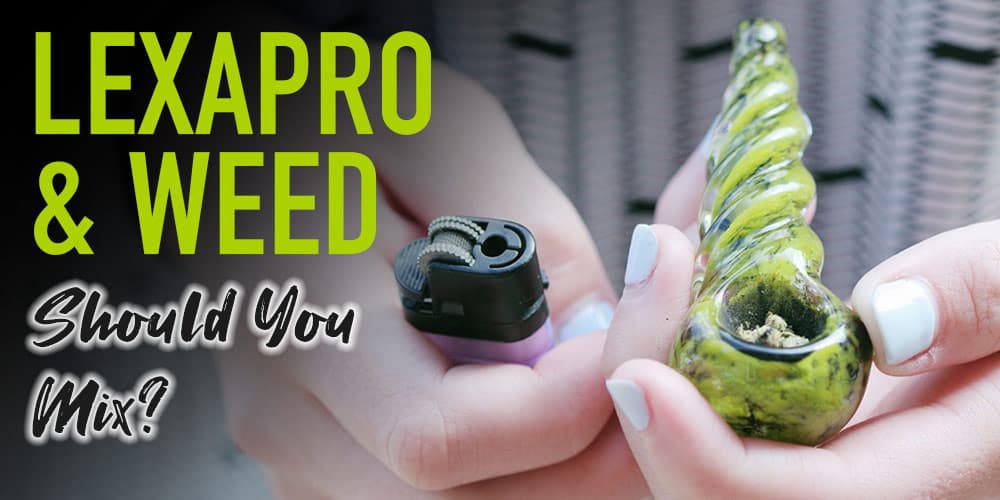Lexapro And Weed, Lexapro, a widely prescribed antidepressant, is commonly used to treat depression and anxiety disorders. Weed, or marijuana, is a recreational drug often used for its psychoactive effects. Both substances impact the brain, but their interactions and combined use are topics of concern and curiosity. In this article, we’ll explore what happens when Lexapro and weed are used together, examining potential risks, effects, and considerations.
What is Lexapro?
Lexapro (escitalopram) is a selective serotonin reuptake inhibitor (SSRI). It works by increasing the levels of serotonin in the brain, a neurotransmitter that plays a key role in mood regulation. Doctors often prescribe Lexapro to treat conditions like major depressive disorder (MDD) and generalized anxiety disorder (GAD).
What is Weed?
Weed, or marijuana, comes from the Cannabis plant. The primary psychoactive ingredient is delta-9-tetrahydrocannabinol (THC), which affects the brain’s cannabinoid receptors. This leads to feelings of euphoria, relaxation, and altered perception. Marijuana also contains cannabidiol (CBD), which has been studied for its potential therapeutic benefits, such as reducing anxiety and improving sleep.
How Lexapro and Weed Interact
When it comes to combining Lexapro and weed, the effects can vary from person to person. Both substances impact the brain’s neurotransmitters, but they do so in different ways. Lexapro increases serotonin levels, whereas marijuana can interact with a variety of brain chemicals, including serotonin and dopamine.
- Mood and Mental Health: Lexapro is prescribed to stabilize mood, while marijuana can lead to temporary euphoria, relaxation, or even anxiety, depending on the strain and individual tolerance. For some people, using weed with Lexapro may counteract the therapeutic effects of the antidepressant, potentially worsening mood disorders or causing heightened anxiety.
- Side Effects: Both Lexapro and weed come with potential side effects. Lexapro’s common side effects include dizziness, fatigue, and changes in appetite, while weed can cause dry mouth, increased heart rate, and impaired memory. When used together, these effects might intensify. For instance, marijuana’s relaxing effects might heighten Lexapro’s drowsiness or dizziness.
- Cognitive Function: Marijuana can affect cognitive function, impairing short-term memory, concentration, and motor coordination. Since Lexapro also influences brain chemistry, there may be an increased risk of cognitive impairments when combining both substances.
- Anxiety and Panic: For some individuals, marijuana can induce anxiety or panic attacks, especially if they are prone to such experiences. This can be concerning for someone who is using Lexapro to manage anxiety, as marijuana could potentially trigger symptoms that worsen rather than help.
Potential Risks of Combining Lexapro and Weed
- Increased Sedation: Both Lexapro and marijuana can cause sedation. When taken together, this may lead to excessive drowsiness, difficulty concentrating, and impaired coordination. This can be dangerous, especially when operating vehicles or performing tasks that require alertness.
- Serotonin Syndrome: Though rare, combining substances that affect serotonin levels, like Lexapro and marijuana, can lead to serotonin syndrome. This is a potentially life-threatening condition characterized by symptoms such as agitation, rapid heart rate, high blood pressure, sweating, and muscle rigidity.
- Decreased Efficacy of Lexapro: Some research suggests that marijuana might interfere with the effectiveness of antidepressants, including SSRIs like Lexapro. Marijuana may not directly reduce serotonin levels, but its effects on mood and cognition could undermine the medication’s ability to stabilize mood and manage anxiety.
- Psychiatric Effects: For individuals with underlying psychiatric conditions, combining Lexapro and weed may exacerbate symptoms such as paranoia, hallucinations, or severe anxiety. This is particularly concerning for individuals with conditions like schizophrenia or bipolar disorder, where cannabis use can lead to unpredictable outcomes.
How to Minimize Risks
If you’re considering using Lexapro and weed together, it’s crucial to consult with your healthcare provider. They can offer personalized advice based on your medical history and current treatment plan. Here are a few general tips:
- Start Slow: If you choose to use marijuana while on Lexapro, start with a small amount to assess how your body responds.
- Monitor Your Symptoms: Pay close attention to any changes in mood, anxiety levels, or cognitive function. If you notice negative effects, it may be worth reconsidering the combination.
- Choose Low-THC, High-CBD Strains: Some people find that strains of marijuana with higher levels of CBD and lower levels of THC may have less psychoactive effect, potentially reducing anxiety and cognitive impairment.
- Avoid Driving or Operating Machinery: Both Lexapro and marijuana can impair concentration and coordination, so avoid activities that require focus and attention if using both substances.
Conclusion
The combination of Lexapro and weed is not without risks, and the interaction between the two substances can vary widely among individuals. While marijuana may offer relief from certain symptoms for some people, it can also counteract the effects of Lexapro or exacerbate mental health issues. To ensure safety and maximize therapeutic outcomes, it’s always advisable to consult with a healthcare provider before using Lexapro and marijuana together. Understanding the effects, risks, and potential consequences of combining these substances is key to making informed decisions about your health and treatment.
You Might Also Like These:
how much is a quarter pound of weed cost



